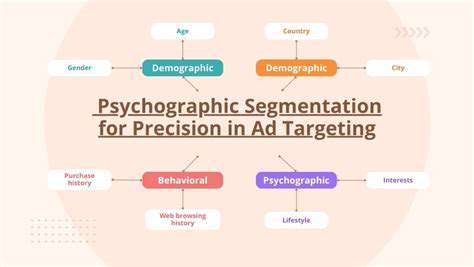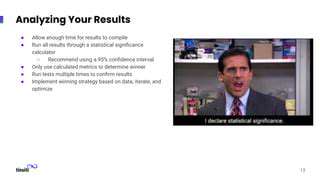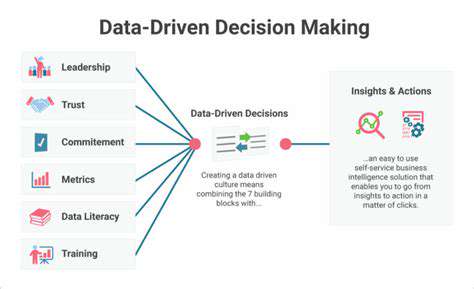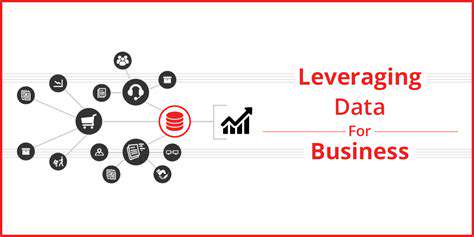Personalization Beyond Demographics: Psychographic Segmentation
Beyond Marketing: Applying Psychographic Segmentation Across the Customer Journey
Understanding Psychographic Segmentation
Psychographic segmentation delves into the deeper motivations, values, and lifestyle choices of your target audience. Instead of simply categorizing customers by demographics like age or location, psychographic segmentation uncovers their underlying needs, desires, and aspirations. This deeper understanding allows businesses to tailor products, services, and marketing messages to resonate with the individual needs and wants of each segment, moving beyond basic demographic categorization and fostering a more meaningful connection.
Identifying key psychographic factors like personality traits, interests, opinions, and values provides valuable insights into consumer behavior. This goes beyond surface-level characteristics and uncovers the why behind consumer choices, enabling businesses to create targeted marketing campaigns that speak directly to the core motivations of their audience. This, in turn, can lead to increased customer engagement and loyalty.
The Customer Journey & Psychographic Insights
Integrating psychographic segmentation into the customer journey map is crucial for a holistic understanding of your audience. At each stage of the journey – awareness, consideration, decision, and loyalty – different psychographic factors come into play. For instance, understanding the values and aspirations driving a customer's initial awareness will significantly influence how you communicate your brand's unique value proposition.
This knowledge is instrumental in tailoring the customer experience at every touchpoint. Knowing the decision-making processes and motivations of a customer at the decision stage, for instance, allows for the creation of compelling content and targeted offers that address their specific concerns and desires. This proactive approach to understanding the customer's journey, infused with psychographic insights, ultimately leads to more effective and personalized interactions.
Tailoring Marketing Messages for Each Segment
Once you've identified your psychographic segments, you can craft highly targeted marketing messages. This involves creating content that resonates with the values, interests, and aspirations of each segment, making your marketing efforts more impactful and less generic. A segment interested in sustainability, for instance, will respond more positively to messaging highlighting your brand's environmentally conscious practices than a segment prioritizing affordability.
By understanding the unique motivations and needs of each segment, your marketing efforts become more effective. This personalized approach leads to higher conversion rates, increased customer engagement, and ultimately, a stronger brand reputation. It's about moving beyond broad appeals and connecting with individual customers on a more profound level.
Optimizing Product Development and Service Delivery
Psychographic insights can significantly impact product development and service delivery. Understanding the values and lifestyles of your target segments allows you to create products and services that truly meet their needs. For instance, a segment valuing convenience might respond well to streamlined online ordering systems, while a segment prioritizing innovation might appreciate early access to new product releases.
This proactive approach to anticipating customer needs, driven by psychographic segmentation, can lead to the development of innovative products and services tailored to specific segments. It helps companies anticipate future trends, adapt to evolving customer preferences, and ultimately, build strong, lasting customer relationships. This approach results in products and services that are not only functional but also resonate with the core values of your target market.
Measuring and Refining Your Strategy
Implementing psychographic segmentation is an iterative process. Key metrics such as customer acquisition cost, conversion rates, and customer lifetime value should be tracked to gauge the effectiveness of your strategies. Analyzing this data allows you to identify which segments are most profitable, understand their purchasing behaviors, and refine your strategies for even better results.
Regularly reviewing and adjusting your approach based on data analysis is essential for ongoing success. This iterative approach, coupled with a keen understanding of psychographics, allows businesses to continuously optimize their strategies, ensuring that they are always meeting the changing needs of their diverse customer base. This data-driven approach ensures that your segmentation remains relevant and effective over time.

Read more about Personalization Beyond Demographics: Psychographic Segmentation
Hot Recommendations
- Personalizing Email Content with User Behavior
- Geofencing for Event Attendance Tracking
- Reputation Management on Social Media
- UGC Beyond Photos: Videos, Testimonials, and More
- The Future of Data Privacy Regulations
- Accelerated Mobile Pages (AMP) Benefits and Implementation
- The Future of CRM: AI and Voice Integration
- Google Ads Smart Bidding Strategies: Maximize Value
- Common A/B Testing Pitfalls to Avoid
- Local SEO Strategies for Small Businesses











